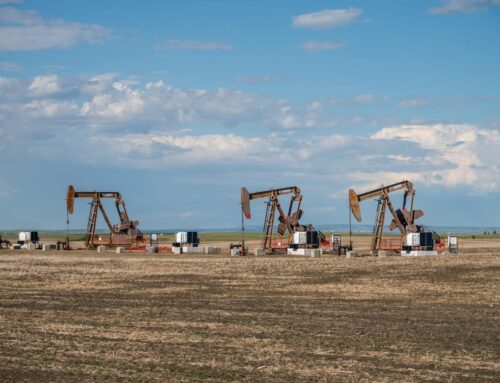Last month, the federal government held its annual auction for oil and gas development leases in the National Petroleum Reserve-Alaska located on Alaska’s North Slope. These sales provide some measure of how well (or poorly) the feds are managing taxpayer-owned resources.
This time, the sale may also be a harbinger of success (or disappointment) for the next highly anticipated lease sale on the North Slope: in the Arctic National Wildlife Refuge.
After years of trying to open the refuge to drilling, Sen. Lisa Murkowski (R-Alaska) managed to tack on a measure to the 2017 tax cuts that authorized lease sales and oil and gas development on the ANWR Coastal Plain. Of the 19 million-acre refuge, the Coastal Plain, also known as the “1002 Area,” is a 1.57 million-acre block on Alaska’s north coast.
As a ridiculous fig leaf, the measure was ostensibly added to the tax package to offset $1 billion of the tax cuts’ $1.4 trillion price tag. By the time of the bill’s final passage, the revenue estimate had been pared down to $910 million. Even that was always far-fetched, but it got built into the budget baseline anyway, which means raising anything less than $910 million from the lease sales will directly add to the budget deficit.
In fact, to raise that much, oil and gas companies would need to bid a total of $1.82 billion at the two planned auctions, because half of the revenue goes to the state. The chances of that happening are — like the refuge itself — extremely remote.
To estimate how much revenue two lease sales in ANWR might actually bring in, we analyzed every lease sale on Alaska’s North Slope and in the nearby Beaufort Sea over the last 20 years. As we reported in August, based on 14 sales for leases in the NPR-A and 20 sales for oil and gas leases on state lands, taxpayers stood to lose millions. Now we have more data.
In addition to the NPR-A sale results reported Dec. 11, Alaska’s Department of Natural Resources announced the results of two of its lease sales in the region on state lands and waters immediately adjacent to the ANWR Coastal Plain. The federal Bureau of Land Management sold leases covering 1.1 million acres for an average price of $10.72 per acre, and Alaska sold leases for 46,000 offshore acres and 108,000 onshore acres in its two sales, which got average bids of $26.41 and $60.76 per acre, respectively.
Of the 161 leases sold in all three sales, not one parcel attracted more than one bid. The results underscore the lack of interest and competition for developing in the Alaskan Arctic, as demonstrated by the departure of Shell and BP from the region years ago.
In our August report, we predicted that if oil and gas companies bid on half of all available parcels in the upcoming ANWR sales, federal taxpayers could only reasonably expect to see between $8 million and $21 million in revenue. After last month’s sales, we have a new data point and now project federal taxpayers will likely only see between $9 million and $14 million in revenue from the two planned lease sales in the ANWR — less than 2 percent of what we were promised when the 2017 Tax Act passed. Even if BLM leased every square inch of the ANWR Coastal Plain, there is no way it would generate anywhere near the amount of revenue lawmakers have anticipated.
These latest lease sale results and BLM’s plan give some indication of a 2020 ANWR sale’s prospects, but the bottom line remains the same. The rush to open up the ANWR Coastal Plain to oil and gas development was built on false premises, and taxpayers will end up losing as a result.











Get Social